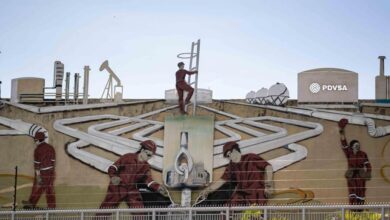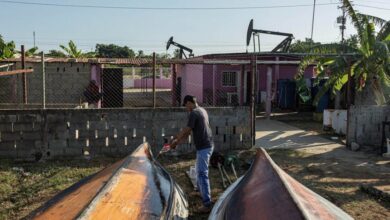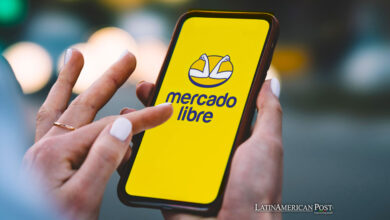Mexico’s “Barrios Mágicos” Spark Hope for Tourism Revival

Mexico’s new “Barrios Mágicos” program aims to boost tourism in cities like Acapulco and bring much-needed infrastructure improvements to areas devastated by natural disasters. Residents hope this initiative will transform their communities and enhance their livelihoods.
Acapulco, one of Mexico’s most iconic coastal cities, is embarking on a new journey to revitalize its tourism sector through the “Barrios Mágicos” program, an initiative launched by the federal government to highlight and enhance lesser-known neighborhoods with rich cultural and historical significance. Acapulco has been synonymous with golden beaches and luxury resorts for years, but the city’s charm extends far beyond its well-trodden tourist paths. With the recent designation of Playa Bonfil and Pie de la Cuesta as “Barrios Mágicos,” residents are optimistic that this recognition will bring a surge in tourism and much-needed infrastructure improvements.
The program, spearheaded by Mexico’s Secretary of Tourism, Miguel Torruco, in collaboration with Guerrero’s Governor Evelyn Salgado, aims to showcase “destinos llenos de Encanto, tradición y misticismo”—destinations full of charm, tradition, and mysticism. This designation comes at a critical time for Playa Bonfil, located in the Diamante Zone of Acapulco. The area is still recovering from the devastation caused by Hurricane Otis in October 2023, a storm that broke records as the most intense cyclone in Mexico’s history for long-time residents like Mario Habana Martínez, who has lived and worked in Playa Bonfil for 41 years, the magic of the neighborhood lies in its unique offerings: the famous pescado a la talla, thrilling surf spots, breathtaking sunsets, and, above all, the warmth and hospitality of its people.
“It’s the way we treat our visitors. We welcome them with open arms, and that’s why they love coming here,” Habana told EFE. The hope is that the “Barrios Mágicos” program will attract more visitors and drive tangible improvements in the community, particularly in the wake of Otis’s destruction. “It’s good for the neighborhood. We want to see improvements in everything—cleanliness, tourist services, and how we receive our guests,” he added.
Economic Revival Through Tourism
The potential economic impact of the “Barrios Mágicos” program is significant, especially in a country where tourism is a primary economic driver. In the first half of 2024, Mexico saw a 6.2% year-on-year increase in international tourism, welcoming 21.82 million visitors. This influx contributed to a nearly 7% rise in tourism-related income, totaling $16.267 billion. The domestic tourism sector also experienced a 7.4% growth in the first quarter of 2024, reflecting the program’s potential to boost local economies.
For Pie de la Cuesta residents, another newly designated “Barrio Mágico,” the program represents more than just an opportunity to attract tourists. It’s a chance to see long-awaited infrastructure improvements that can elevate locals’ quality of life. María Nelly Mejía, a native of Pie de la Cuesta and president of the Union of Business Owners in the Tourist Zone, emphasized the importance of the program’s focus on infrastructure. “All the facades will be uniform, so everything looks nice. Then, we’ll get two new beach access points, training, promotion, and everything else we’ll see,” Mejía told EFE.
The program’s broader objective is to encourage tourists to explore parts of Acapulco beyond the traditional beach destinations. According to Simón Quiñonez Orozco, Guerrero’s Secretary of Tourism, the “Barrios Mágicos” designations aim to highlight areas with their distinct history, gastronomy, and natural beauty. “These areas have their own stories, gastronomy, and unique characteristics,” he explained in an interview. The expectation is that this strategy will lead to a significant increase in hotel occupancy, potentially boosting it by 15% to 20%.
Community Hopes for Lasting Change
While the “Barrios Mágicos” program is primarily a tourism initiative, it represents much more for the residents of Acapulco’s newly designated neighborhoods. The recognition brings with it a promise of investment in the local infrastructure, which many hope will address issues that have plagued the area for years. In Playa Bonfil, residents are eager to see improvements in basic services like sanitation and public safety, which are crucial for sustaining the influx of tourists.
For people like Mario Habana Martínez, the program’s success is tied to its ability to foster long-term change in the community. “We want the neighborhood to be cleaner, safer, and more welcoming for visitors,” he said. The recent devastation caused by Hurricane Otis has only intensified these desires. The storm, which made landfall with unprecedented force, left a trail of destruction that was difficult to recover from. Many in Playa Bonfil see the “Barrios Mágicos” designation as an opportunity to rebuild their homes and livelihoods.
Similarly, in Pie de la Cuesta, the hope is that the program will bring tangible benefits beyond tourism. “What we’re looking for is a comprehensive improvement,” said María Nelly Mejía. She stressed that the program should focus on beautifying the area and providing the necessary resources to maintain these improvements. The new beach access points, for example, are expected to make the area more attractive to visitors, but they also need to be well-maintained to ensure they serve the community in the long term.
Beyond Tourism
As Mexico continues to invest in tourism as a critical economic driver, the “Barrios Mágicos” program represents a strategic shift towards a more inclusive and sustainable approach. By focusing on lesser-known neighborhoods with rich cultural and historical significance, the program seeks to distribute the benefits of tourism more evenly across the country. For cities like Acapulco, which have long relied on their coastal allure to attract visitors, this initiative offers a new way to showcase the city’s diverse experiences.
The program also highlights the importance of community involvement in tourism development. By working closely with local residents and business owners, the government aims to create authentic tourism experiences that reflect the community’s identity. This approach not only enhances the visitor experience but also ensures that the economic benefits of tourism are felt at the grassroots level.
However, the success of the “Barrios Mágicos” program will ultimately depend on its implementation. While the designation promises investment and development, it also raises expectations among residents who have long waited for improvements in their communities. For the program to achieve its goals, it must go beyond cosmetic changes and address the underlying issues that have hindered the development of these neighborhoods for years.
Also read: Mexico’s Push to Revolutionize Its Medical Device Industry Economy
As Acapulco’s “Barrios Mágicos” take center stage in Mexico’s tourism strategy, the city stands at a crossroads. The program offers a unique opportunity to revitalize these communities and create a more sustainable future for residents and visitors. Whether this potential is realized will depend on the commitment of all stakeholders to work together towards a shared vision of progress and prosperity.
For residents like Mario Habana Martínez and María Nelly Mejía, the hope is that this time, the magic will bring tourists and the lasting change their communities desperately need.




